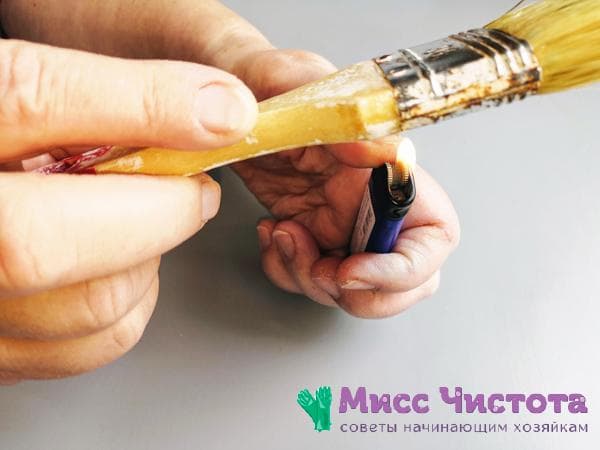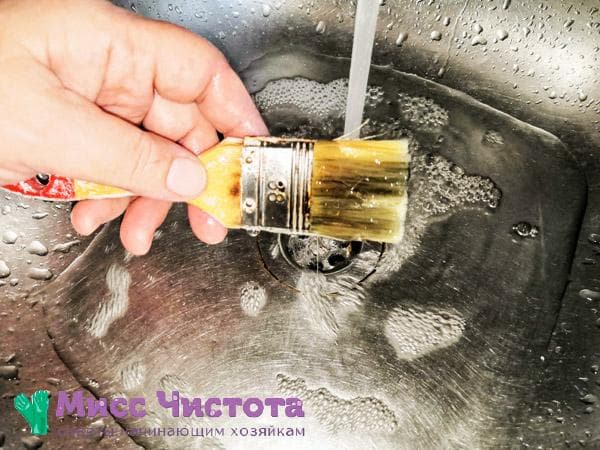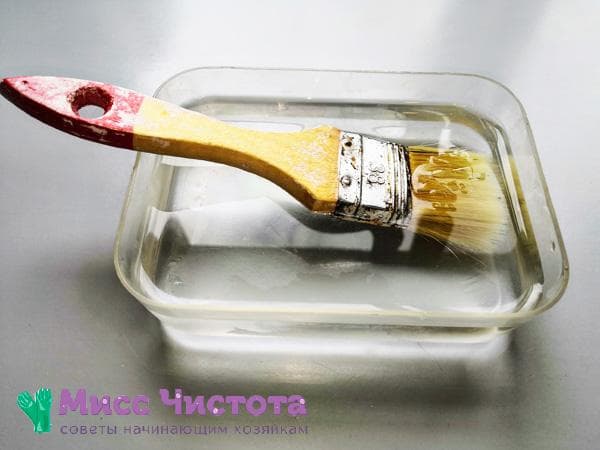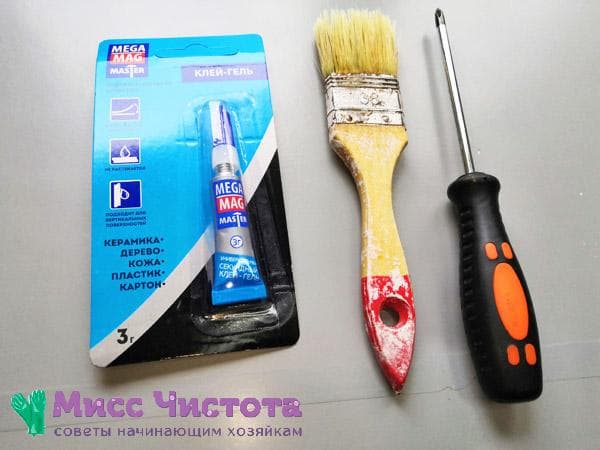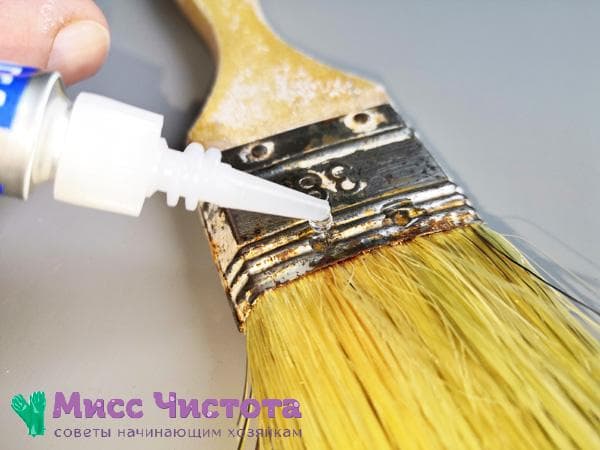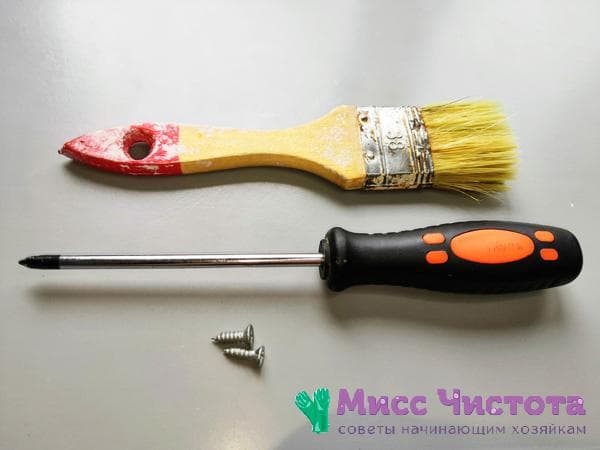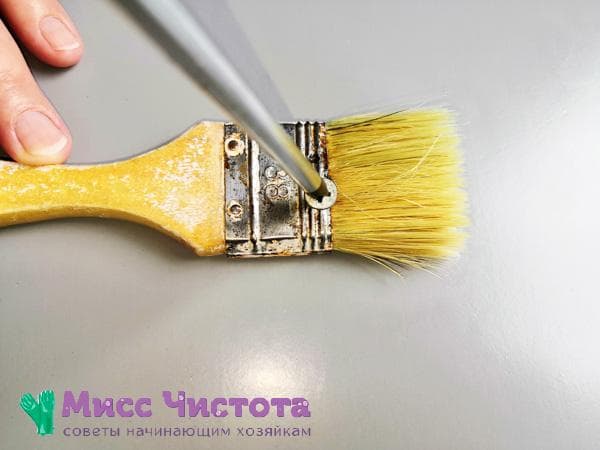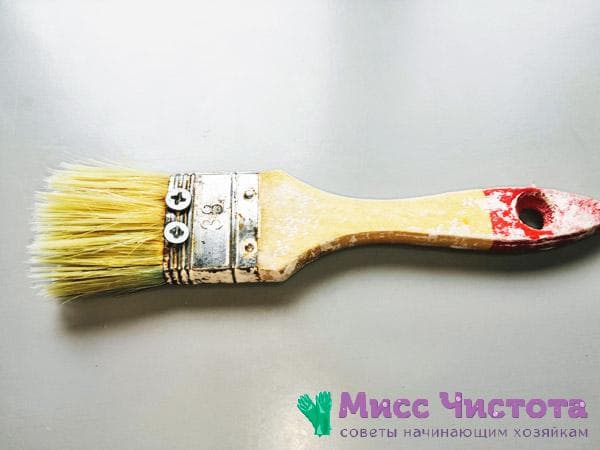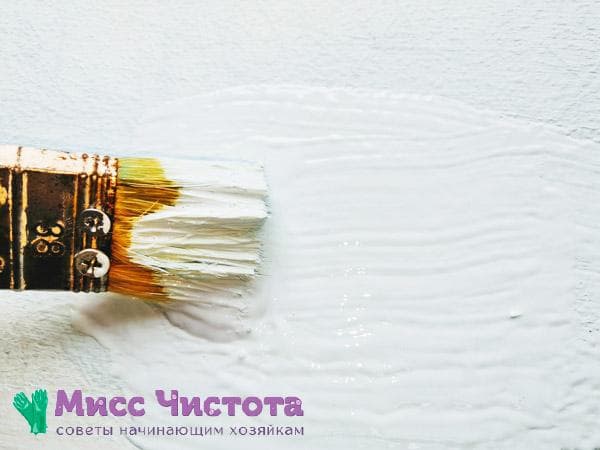The painter told me what needs to be done to prevent the brush from “fading” - 4 tips
Newly purchased paint brushes at the store leave hairs at first. When the brush is used, the individual bristles of its bristles spoil the appearance of the painted surface. But there are several proven life hacks from professionals on how to prevent hairs from falling out of your brush.
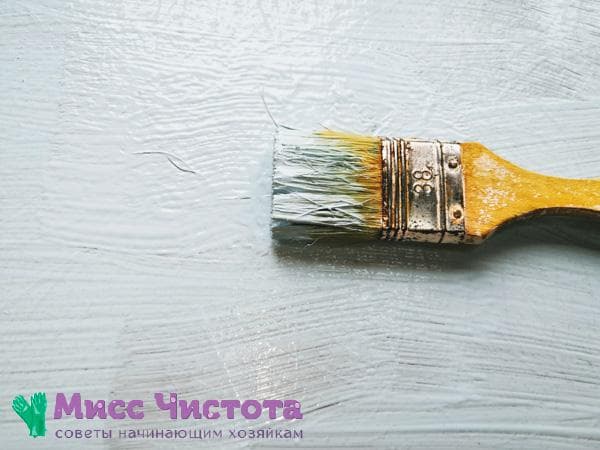
Causes of the problem
Brushes with natural bristles often lose hair. Before starting work, you need to thoroughly rinse the instrument and make a couple of test strokes on any surface. This will cause loose bristles to fall out.
There are several reasons why individual bristles fall out:
- Hair breaks due to improper processing during the production process.
- The pile is overdried, and during work it splits and breaks.
- The bristles in the metal casing are poorly glued.
A brush with defective bristles is difficult to fix. More drastic measures may be necessary and worth trying. If the instrument continues to become bald after this, it may not be repairable.
Heating the clip
The metal part of the brush is called the clip and acts as a holder for the hair bundle. The hairs are attached to a wooden or plastic cutting by a clip into which molten rosin is poured during production. When it hardens, it reliably holds the hairs together and keeps them in a stable condition.
If you hit the instrument hard or drop it on a hard floor, the rosin may simply break and crumble.As a result, the holding capacity is weakened and the hairs simply fall out of the clip. When painted, they remain on the wall surface.
Physical impact is the most common reason why lint falls out. In this case, you need to melt the rosin and let it harden again. This will restore the structure of the adhesive layer, which can hold the pile.
The metal holder of the brush must be heated with low heat. A regular lighter will suffice. There is no need to disassemble the brush. After heating, place the brush on a safe surface that will not deteriorate or catch fire from the hot clip.
You need to heat it carefully so as not to burn the bristles themselves. Otherwise, the brush will completely deteriorate.
Soaking in warm water
Before soaking, the instrument is thoroughly washed. To do this, you should take liquid soap or dish soap. The instrument is cleaned of dirt and the weakest hairs are removed. Then the brush is soaked in warm water for several hours. This will cause the hairs to swell and fill the empty space in the clip.
After soaking the brush, wipe it well and dry it. Then you can continue working. The method is suitable for natural pile with a wooden base. Wood also swells from water and makes the hairs attach more tightly.
Pouring glue
If soaking in water does not give positive results, there is another way to make sure that the hairs do not leave the brush. In the frame of the brush you need to make two holes into which glue is poured.
Any available tool is suitable for this:
- sharp screwdriver bit or single-pass tap;
- awl;
- nail.
The glue must be waterproof. To do this, you can select “Universal Moment” or BF-2.After which the brush cannot be used until the glue is completely dry.
Sealing with self-tapping screws
You can leave the molting process without glue or rosin. To do this you will need a couple of screws or self-tapping screws. Usually a length of about 5-7 mm is suitable, but it is better to choose according to the thickness of the wood.
Self-tapping screws are screwed into pre-punched holes in the frame using a screwdriver or screwdriver. This creates an additional seal. The brush no longer fades.
Questions and answers
What to do if the brush is very fluffy?
The bristles are dipped several times in a warm (not hot) solution of edible gelatin. The metal frame must remain dry, since the temperature will melt the rosin and the lint will simply fall out. For drying, you can use a paper cone, which will give the desired shape. After the gelatin dries, the pile will become hard, as if petrified.
In this condition, processing is carried out with sandpaper. The correct shape of the bristles is set. It is necessary to clean flat and protruding hairs, the tool will become more convenient for work. The pile is then soaked in warm, clean water to remove the gelatin layer.
How to soften the bristles of a brush?
To make the bristles softer, you can put the brush in warm water for several hours. Additionally, you can add a small amount of solvent or wine vinegar for natural bristles. The brush is soaked in the solution for a couple of hours.
How to properly clean the brush after use?
You can use warm water to clean the brush. Brushes should be washed immediately after use. After rinsing, it is important to squeeze out excess water and shape it into the correct shape. If there is severe contamination, you can use a solvent, alcohol, including isopropyl alcohol.Then it is important to dry the brush.
Do not store brushes when wet. Before storing it on the shelf, it should be thoroughly dried. In case of long-term storage, the tool should be in a vertical position with the bristles facing up.
Painting with a brush whose lint comes out is an unpleasant task. There are several proven tricks after which hairs will stop falling out. Proper tool care will prevent lint loss.
